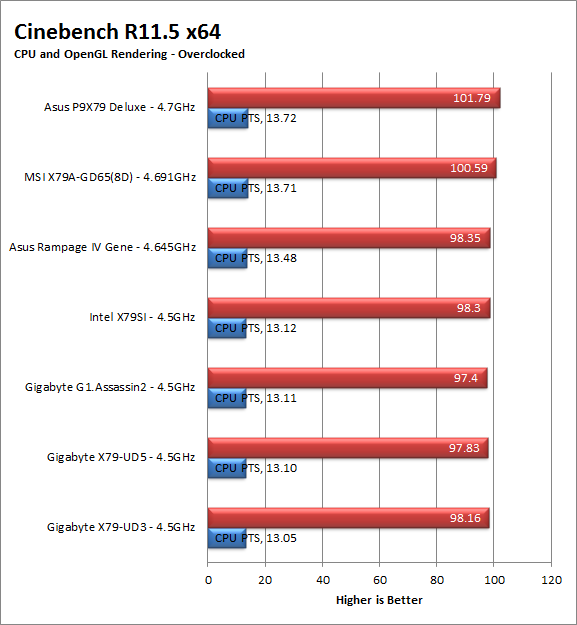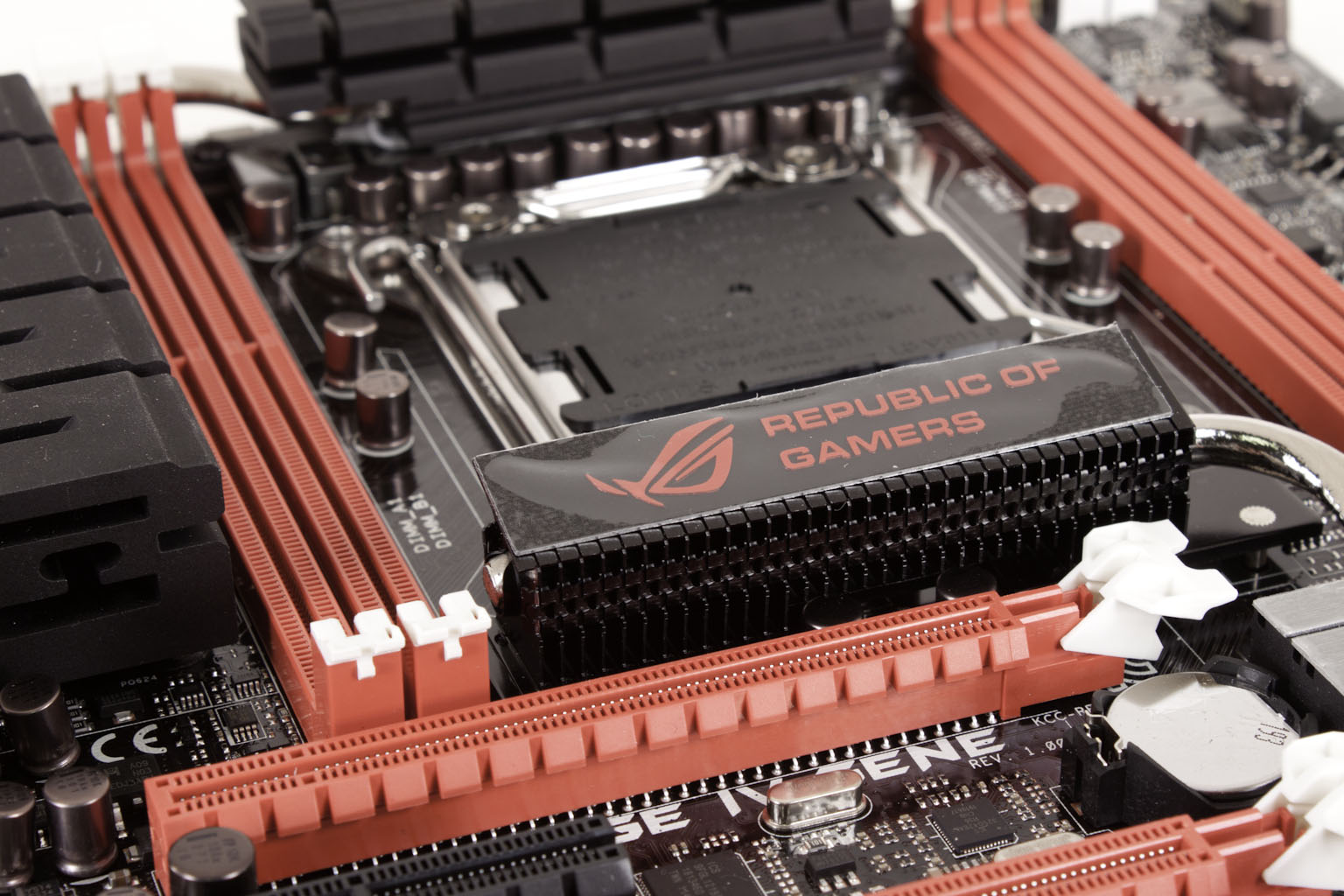Section II - Performance Tests, Synthetic
In this section of testing we cover the synthetics. These are tests that run a scripted sequence of internal APIs or that use another installed application to perform a series of scripted events. They are great in that they can provide reproducible results across various platforms. On the down side, synthetic tests can be fooled with driver tweaks and optimizations. In some cases it is necessary to rename the .exe file to something generic to discover if this is the case. In any event when this is needed (when a test shows a drastic difference in performance over the renamed exe) we will note this and show both results for comparison.
PCMark7 -
PCMark7 is the latest general performance test from FutureMark. As each generation of this benchmark has evolved and developed we have watched them add more and more realistic tests to this suite. With this generation we find more media tests, (audio and video transcoding) moving of large files, multiple web page rendering, and much more (the even added DX10 gaming). We use the Overall Performance and Common Usage suites in our testing.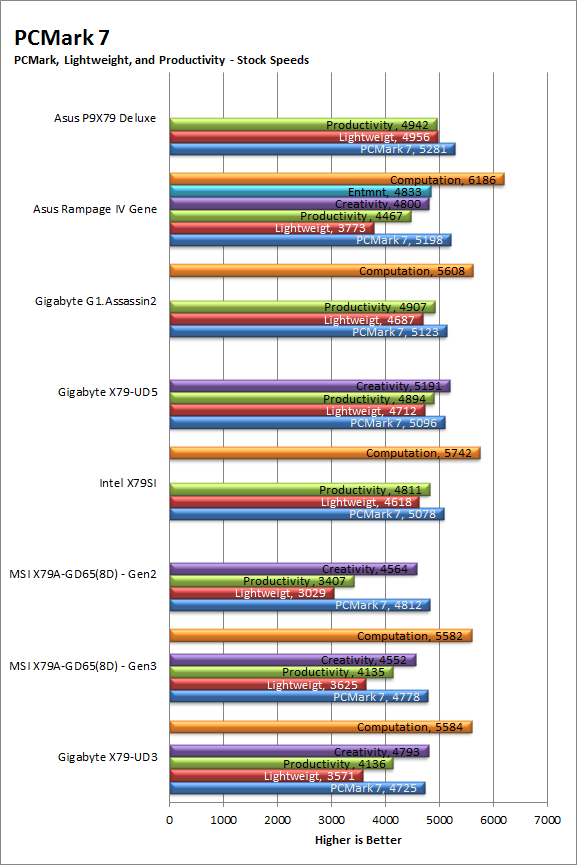
With PCMark7 our general computing synthetic test we saw the Gene doing very well at stock speeds. It was right behind the P9X79 Deluxe which is a very solid board and one that showed us some great promise. This looks good for people that are looking for a board with solid workstation, gaming and content creation performance, but PCMark7 is only half of the story.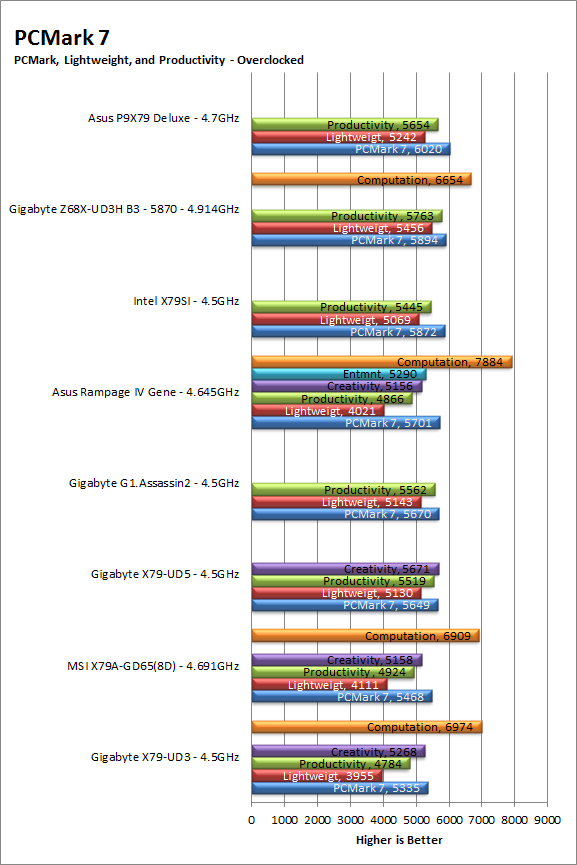
3DMark 11 -
3DMark 11 is the other Futuremark test that we run on our motherboards. This test simulates the typical tasks that a GPU (and system) would have to perform to provide you with a good gaming experience. It is based on the DX9, DX10 and DX11 engines but can only be installed on Windows Vista or later. The suite of tests covers DX9, DX10, and of course DX11 rendering; it also covers AI computations and physics. That’s right I said Physics the latest version of 3DMark uses a Havok physics engine. This removes the advantage that nVidia had with 3DMark Vantage.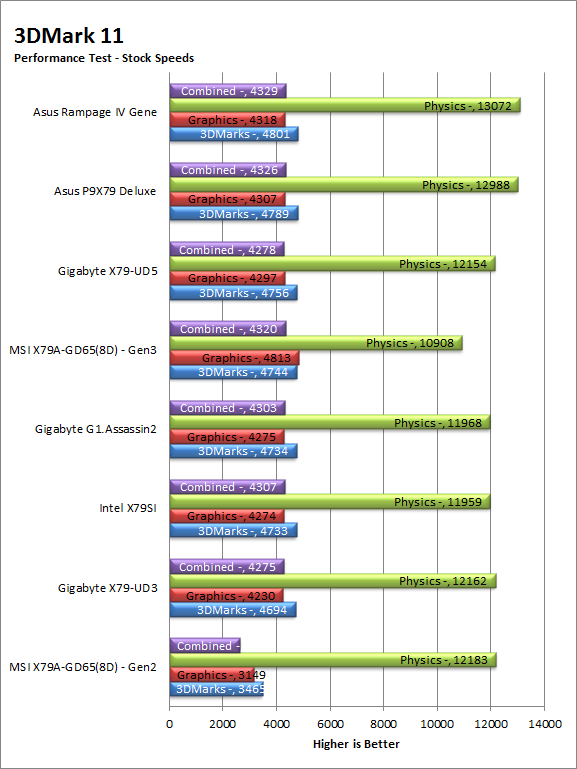
The Rampage IV Gene shows off again under 3DMark 11 by coming out at the top of the list for both stock and overclocked testing. This is good news for you gamers out there… well that is if the performance we are seeing this this synthetic test are in line with real-world gaming.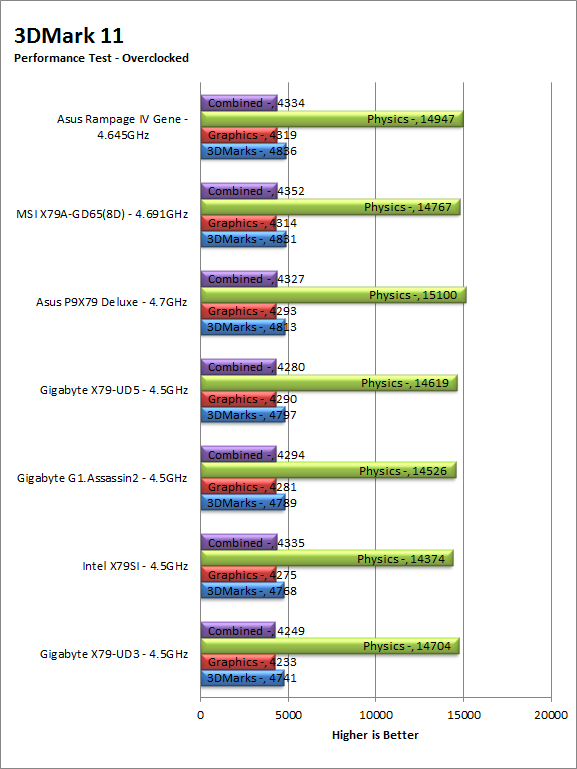
HyperPi 0.99b -
HyperPi is a front end application that allows you to easily run multiple instances of the SuperPi application. SuperPi, for those that are not familiar with it, is an application that measures the time it takes to calculate the number Pi out to as many as 32 million places. This calculation is then checked and run multiple times (up to 24 for a 32M run). This test stresses the CPU, Memory and HDD as data is handed off between the three. If there is a weak link, HyperPi will show it. For our testing we run the 32M test on as many cores (and threads) as the CPU has available. The slowest CPU time is then recorded.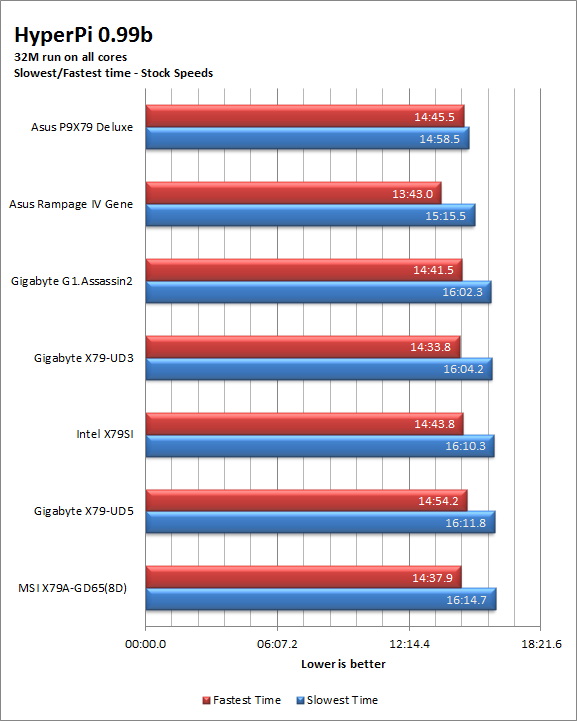
Again at stock speeds the Rampage IV Gene does a great job coming in right behind the P9X79 Deluxe. Unfortunately when we overclocked the board it dropped like a stone. The performance numbers here when the CPUs are at 100% load and under stress are concerning. This may end up impacting performance of real world rendering applications along with image manipulation programs and possibly transcoding.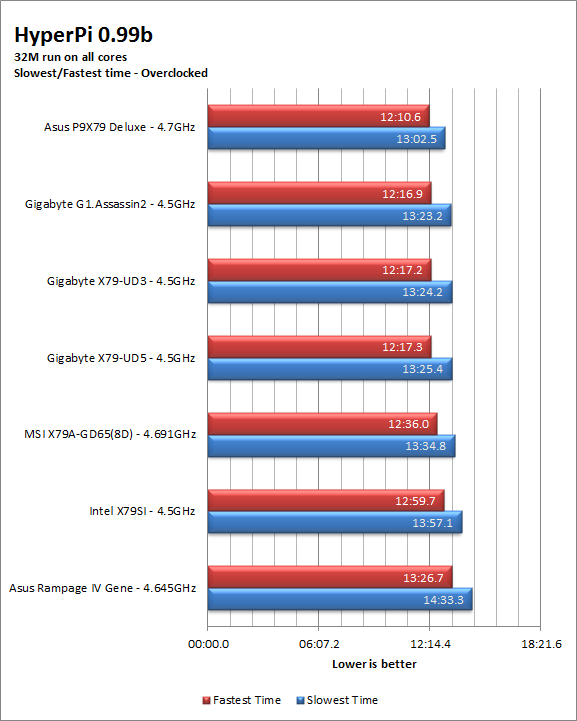
Cinebench R11.5 -
Cinebench R11.5 is the 11th release of Maxon’s rendering test. This test is based off of the Cinema 4D engine, which is one of the industry standard tools for digital animation. It is a powerful product with many different modules that can be “plugged” into it to increase its effectiveness. With Cinebench you get to see how your computer would do using this application. There are two tests; one tests the CPU’s ability to render an image across multiple cores or threads. The other tests your systems ability to handle OpenGL based rendering.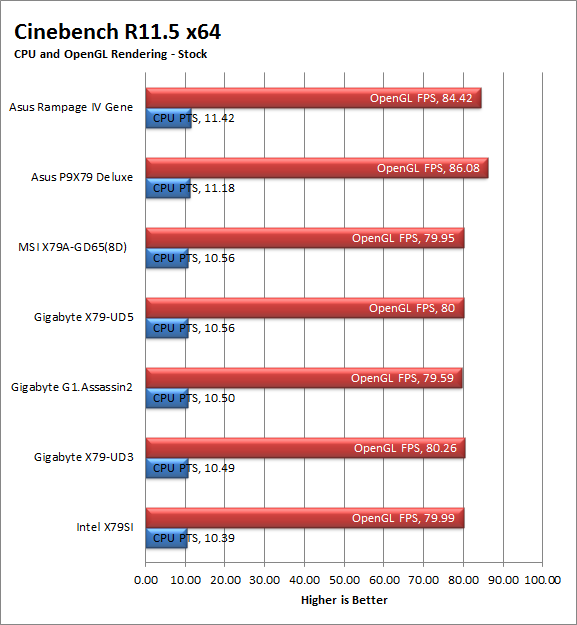
The Rampage IV Gene did very well under Cinebench R11.5 at stock speeds, but again fell behind when overclocked. We would have expected it to scale a little better than what we are seeing here to be honest. We hope that we do not see the same impact when we run our LightWave testing later.